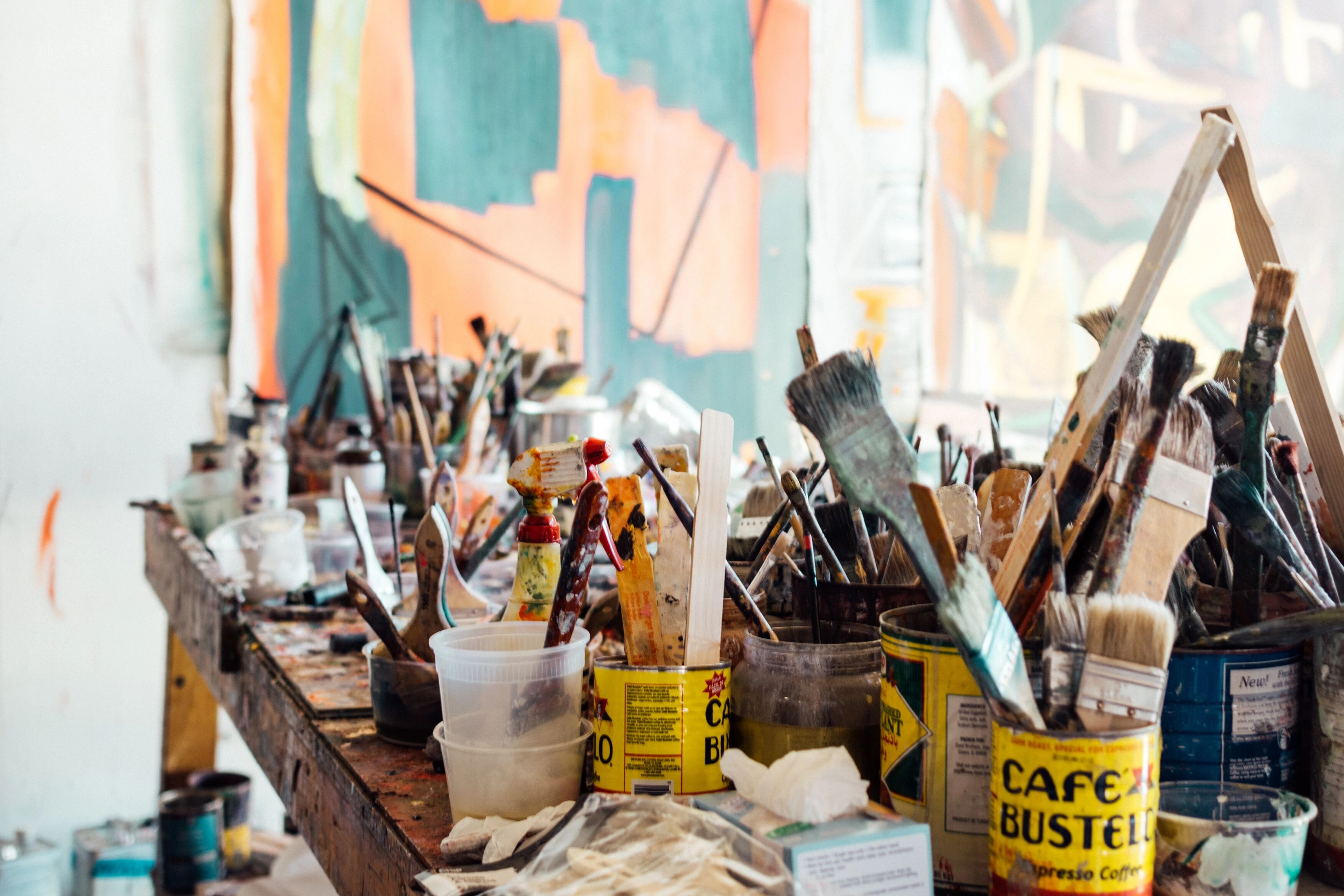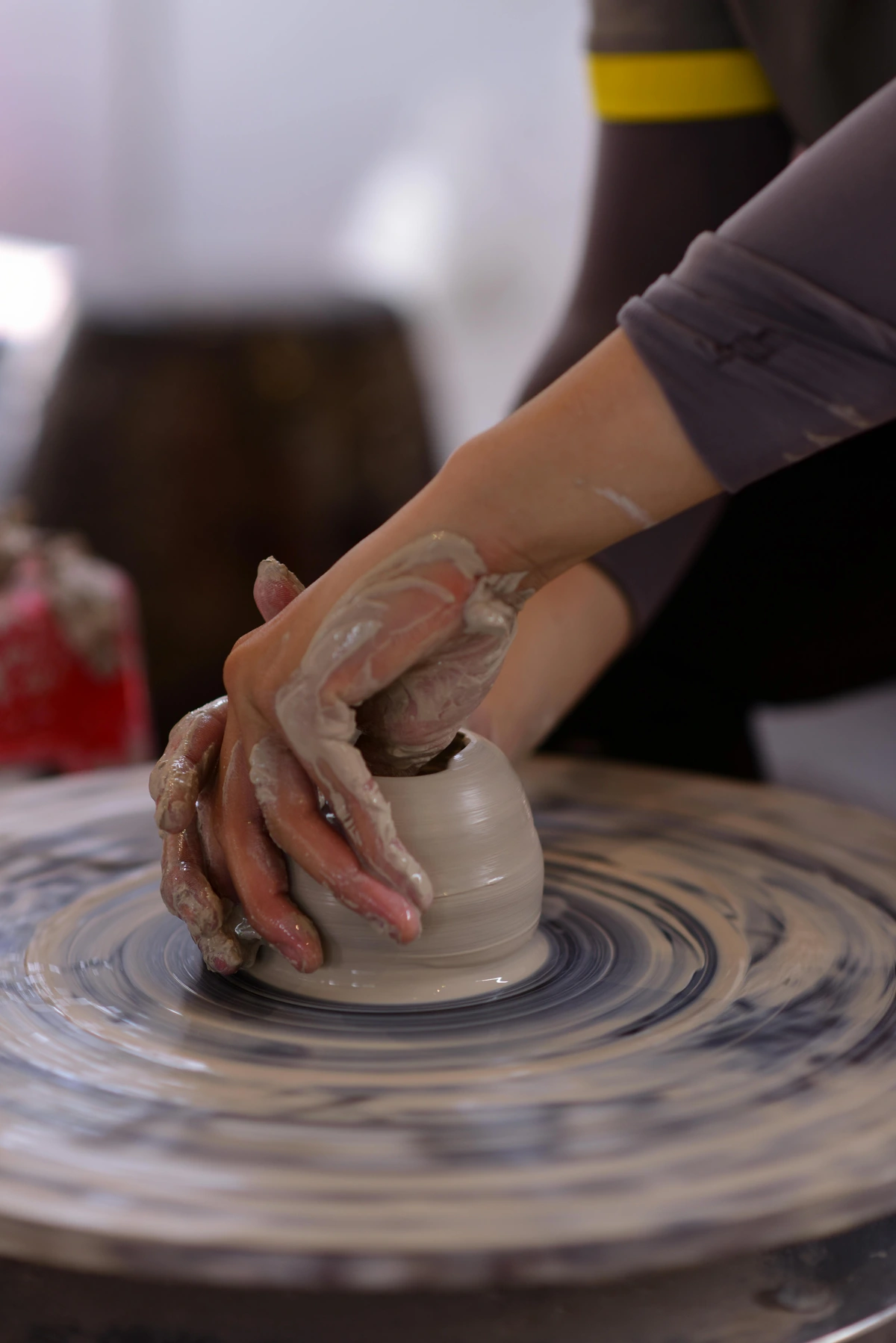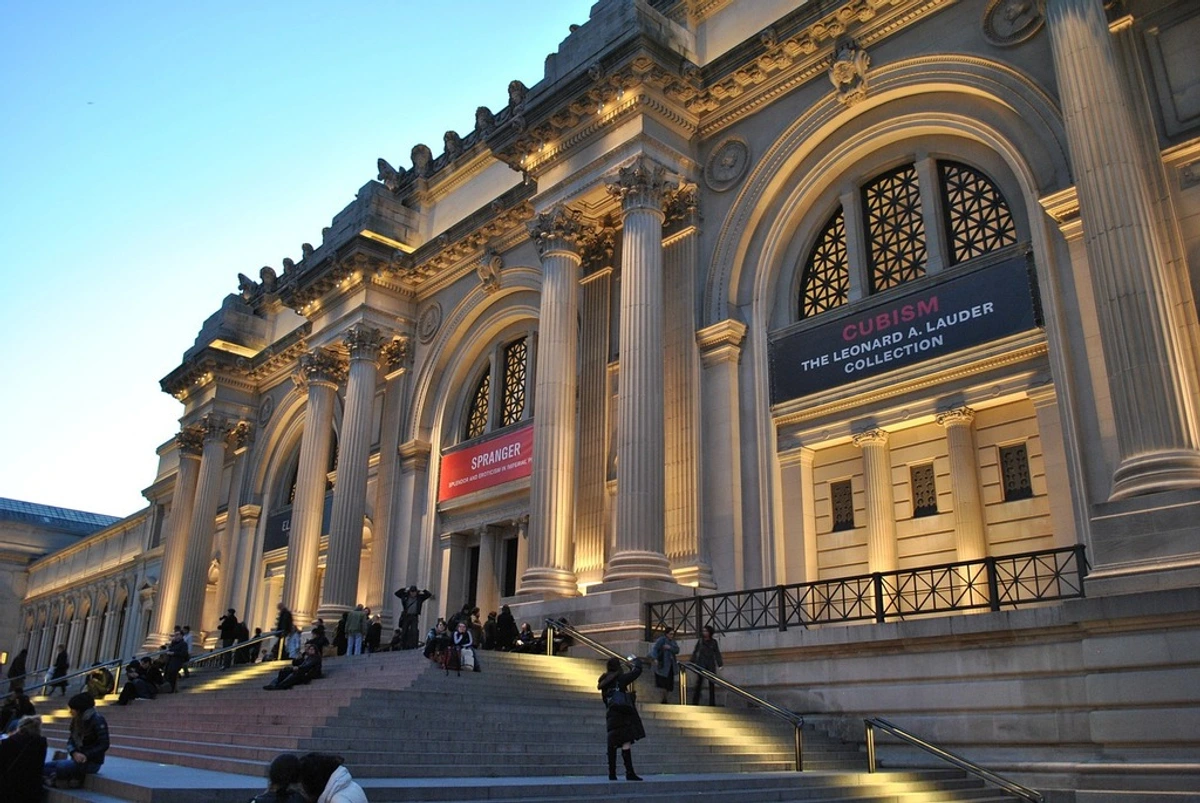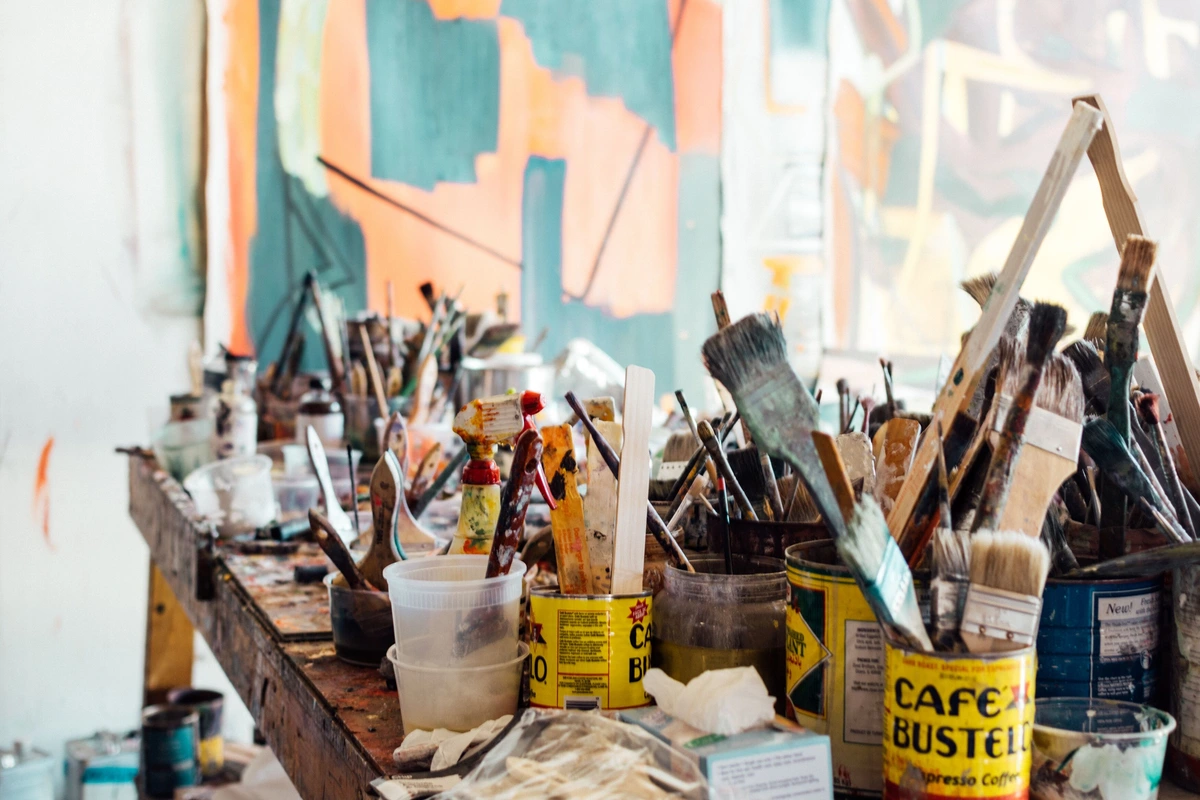
Artist-Run Spaces: The Heartbeat of Contemporary Art & How to Find Them
Discover artist-run spaces, the vibrant, experimental hubs essential for emerging art and community. Learn their impact, unique challenges, and how to uncover these crucial creative havens.
Artist-Run Spaces: The Unfiltered Heart of Contemporary Art
Do you ever get that feeling the art world can be a bit... distant? All those pristine galleries and grand museums have their place, absolutely. But if you're like me – someone who longs for a direct connection, a glimpse behind the curtain into the raw creative pulse – then you've got to know about artist-run spaces. I stumbled into one years ago, on a rainy evening in a city I barely knew. The art was fresh, the conversations were alive, and suddenly, the 'art world' felt less remote and much more human. This feeling of direct connection – art truly made and shared by people like you and me – is the very essence of these vibrant hubs. This article, then, is my love letter to them, an exploration into why I believe they are utterly indispensable for the ongoing evolution of art, offering an unfiltered alternative to the mainstream. They're where artists take the reins, experimenting wildly, sometimes leading to glorious failures, sometimes to groundbreaking successes, all outside the typical commercial gaze.
The "What": Understanding Artist-Run and Alternative Art Spaces
So, let's nail down what an artist-run space actually is. At its core, it's an exhibition venue and project room initiated, funded, and operated by artists themselves. It's a surprisingly simple concept, but in practice, it’s truly game-changing. Instead of waiting for a commercial gallery to 'discover' them, or navigating the often-intimidating bureaucracy of institutional spaces, artists literally take matters into their own hands. Think of it like a band building their own recording studio and label, rather than hoping for a big record deal. This DIY ethos is their superpower, granting incredible freedom in what's shown and how. My own studio practice, while maybe not as public, certainly resonates with this impulse to simply make and then find a way to share it on my own terms.
You might find a group of ceramicists transforming a disused shop into a functioning studio and gallery, hosting workshops and pop-up shows. Or perhaps a digital art collective showcasing interactive installations in a temporary online exhibition space, redefining what an 'exhibition' even means through immersive, responsive experiences. I've seen artist printmaking collectives turn old warehouses into buzzing hubs for collaborative projects, and performance art spaces pushing the boundaries of live experience in ways traditional venues wouldn't dare. The possibilities are as endless as the artists' imaginations, proving that creativity doesn't need gilded walls.

These spaces often fall under the broader umbrella of alternative art spaces, a term encompassing a wide range of artist-initiated, non-commercial venues dedicated to experimental art, cultural discourse, and community engagement. While artist-run spaces are directly managed by artists, other alternative spaces might be run by small non-profits, collectives, or even temporary pop-up initiatives. The common thread? A fierce independence from mainstream commercial and institutional pressures, a kind of artistic ingenuity that thrives outside the usual channels.
This spirit of self-organization isn't a new phenomenon; it's a thread woven through art history, a recurring act of rebellion and innovation:
- 19th Century Paris: The iconic Salon des Refusés in 1863 saw artists like Manet and Cézanne, rejected by the official Salon, simply creating their own exhibition. It was their way of saying, "We'll show you what we think matters."
- Early 20th Century Avant-Garde: Groups like the Dadaists and Surrealists often created independent exhibitions and manifestos to challenge conventional art forms, as explored in The Enduring Influence of Dadaism. They weren't waiting for permission.
- Late 20th Century Innovation: Spaces like The Kitchen in New York, which began in the early 70s as an artist collective presenting video and performance art, exemplify how artist-initiated projects can evolve into significant cultural institutions while retaining an experimental edge.
Today, artist-run spaces carry that torch, enabling artists to step into the curatorial role themselves. They select works not just for aesthetic appeal but for conceptual resonance, daring, or community relevance, often challenging the very definition of what art is. It's fascinating, too, how in the 21st century, digital tools and online platforms have further empowered artists. They can create and promote these spaces, often extending their reach far beyond physical walls, creating virtual galleries or collaborative online projects that push boundaries even further.
The "Why": Why These Hubs are Truly Indispensable
Knowing what these spaces are really only sets the stage for why they matter so profoundly. For me, they aren't just an alternative; they're absolutely essential. These hubs provide a crucial, low-stakes platform for emerging artists to experiment, to fail gloriously (because, let's be honest, that's often where the real learning happens), and to find their voice outside commercial pressures. Think of it like a musician jamming in a garage before hitting the stadium circuit – it's where the raw, unpolished magic happens. Traditional galleries, bless their pragmatic hearts, often have to prioritize sales and market trends. Artist-run spaces? They prioritize art itself.
This is where you'll encounter truly boundary-pushing work – maybe a performance art piece involving a hundred alarm clocks and a silent audience that challenges our perception of time, an ephemeral installation made entirely of found objects that questions consumerism by building a temporary monument to waste, or a pioneering digital art exhibition that redefines interaction through AI-generated narratives. These are the projects too edgy, too process-oriented, or simply too new for mainstream venues. They are, in fact, often the seeds of future art movements, much like the early days of abstract art when artists were just trying to figure out what was even possible – no rulebook, just a canvas and an idea, pure exploration. For collectors interested in the next big thing, these are truly the places to start, as I've mentioned in Collecting Emerging Abstract Art. It’s a very different conversation than one you might have in a traditional setting, as explored in Q&A with a Gallerist.
Beyond exhibition, these spaces are often crucibles for interdisciplinary collaboration. Imagine a visual artist, a musician, and a coder converging in a shared space to create an immersive, interactive installation that responds to sound, light, and movement. This kind of cross-pollination leads to entirely new forms that wouldn't fit neatly into any single 'genre' elsewhere. They foster unique environments for critical feedback, mentorship, and shared resources, truly building a community of practice that extends far beyond individual exhibitions and into long-term professional development. It's an informal art school, in a way, for those who prefer learning by doing. Furthermore, artists in these spaces often develop a wide range of practical skills beyond just their artistic practice – everything from marketing and grant writing to carpentry for installations and community organizing. It's a true masterclass in self-reliance.
But let's be honest, this fierce independence isn't always easy. Running a space is hard work, a constant juggle that often feels like you're trying to herd cats while simultaneously painting them. The administrative burden alone – from finding suitable venues in a city where rents are constantly climbing, to navigating byzantine permit processes, to the relentless cycle of applying for grants – can be a monumental task. This often falls squarely on the shoulders of the artists themselves, leading to burnout and significant financial instability. You pour your heart and soul, and often your savings, into a passion project, and it can be emotionally draining when passion meets practicalities. Success here isn't always measured in traditional metrics like sales or attendance; it's more about cultural impact, community building, and providing a platform for voices that might otherwise go unheard, which makes long-term planning a bit like navigating a beautiful, but perpetually shifting, landscape.
Then there are the internal dynamics. Conflicts over artistic direction or operational roles are almost inevitable when you have a group of creative, strong-willed individuals working closely together. Maintaining a consistent vision while navigating limited resources is a constant tightrope walk, often requiring more diplomacy than I typically possess (and trust me, my journey, detailed in My Journey from Studio to Sale, has had its fair share of tightropes). My own feet have definitely seen more pavement than my studio floor sometimes, searching for that next perfect space, a testament to the relentless hunt for the right environment!

The Vibe: More Than Just Walls, It's a Living Experience
So, what's the magic, the secret sauce that makes these spaces feel so different? Picture walking into a grand, established gallery like The Met, all hushed tones, echoing floors, a pristine, almost sterile formality. Now, step into an artist-run space. It's often buzzing with a completely different kind of energy: the murmur of excited conversations, perhaps the scent of fresh coffee mingling with turpentine or even the lingering aroma of last night's potluck. You might hear the faint sounds of hammering from a studio next door, or see works-in-progress casually leaning against walls. The visual clutter, the visible signs of making, are all part of the charm. It's less about passive consumption and more about active conversation and genuine interaction. I always feel like I'm getting a secret peek into the creative mind, which, for me, is absolutely thrilling. I recall one particular opening where I spent an hour discussing a sculpture made from recycled electronics, not with a gallerist, but with the artist herself, who was just as eager to hear my thoughts as to share her own. The espresso was surprisingly good that night, too. It’s these moments, amidst the buzz and the genuine exchange, that you truly feel the art world breathing, alive and immediate. Oh, and sometimes the coffee is a bit dodgy, but that just adds to the authentic, unpolished charm, doesn't it?
What kind of atmosphere are you seeking in your next art discovery? If this vibrant, unfiltered energy sounds like your kind of art experience, then the big question is: how do you actually find these hidden gems?
Finding Your Next Artistic Obsession: A Practical Guide
Honestly, it takes a bit of delightful legwork, but that's part of the adventure! Forget the glossy, official brochures. Here's how I usually start my hunt, and what I've learned along the way:
- Go Local, Go Niche: Start with independent art blogs or local cultural listings for your city. Think 'what's happening this weekend in the alternative art scene?' Look for small cultural festivals or art walks that highlight local talent. Check out local art councils or community arts organizations; they often have directories or event listings for artist-led initiatives. And don't be afraid to venture into unexpected or less gentrified neighborhoods; these are often where the most exciting new spaces first emerge, often in former industrial zones or quirky storefronts.
- Word of Mouth is Gold: Talk to artists, art students, even baristas in creative neighborhoods. They often know where the real action is. A quick chat over coffee can sometimes uncover the best-kept secrets, or point you to an unadvertised pop-up. I once found an incredible kinetic sculpture exhibit in a tiny alleyway gallery after a recommendation from a street artist.
- Social Media & Online Directories: Many artist-run spaces have an active online presence, often on Instagram or dedicated local art platforms. Search hashtags like
#artistrunspace [your city]or#independentgallery [your city]. You can also find great resources for artists online, as discussed in Top Online Resources for Emerging Artists. - Institutions & Universities: Look for spaces associated with art schools or universities; these often function as artist-run incubators, providing infrastructure for experimentation while maintaining an independent spirit. They're like the supportive older siblings of the art world.
- Physical Exploration: Simply wander through neighborhoods known for their creative communities. Look for unusual storefronts, subtle signs, or open doors that hint at artistic activity. Sometimes, the best discoveries are made by pure serendipity – or a slightly dodgy hand-drawn sign that promises "Art & Bad Coffee."
- Attend Openings: This is where the magic happens! Openings are usually free, vibrant, and the best way to meet the artists and other enthusiasts. Plus, free wine, sometimes! (Though I can't promise the quality.)
Once you're there, don't be shy! Ask questions, engage with the work, and if you can, support the artists. Many spaces rely on direct sales or donations to keep their doors open. It's a tangible way to invest in the future of art, right there on the ground. When I think about Buying Art from Local Artists, these spaces are always at the top of my mind, and of course, you can always explore my own art for sale here. As for approaching artists or organizers, a genuine compliment or a thoughtful question about their process is always appreciated. They're usually just happy someone is engaging with their work on a deeper level.
The True Impact: Shaping the Art World's Future
Now, let's talk about the ripple effect. I sometimes think of artist-run spaces as the coral reefs of the art world – small, vibrant ecosystems that support immense biodiversity. Without them, the entire creative ocean would be poorer, less dynamic. They are safe, nutrient-rich environments for nascent ideas to grow, for experimental forms to be tested, and for new artistic voices to find their footing before they are ready for the larger, more commercial ecosystems. But their impact extends far beyond just nurturing individual artists; they are incubators of new ideas that subtly, and sometimes not so subtly, influence the broader art market and cultural landscape.
Think of it this way: many of the avant-garde performance art movements, or the rise of independent digital art and new media showcases, often found their earliest, most fearless platforms in artist-run initiatives. They've been instrumental in preserving ephemeral art forms, ensuring that groundbreaking performances and temporary installations are documented and remembered. These spaces are often the testing grounds for trends, challenging established norms and paving the way for new aesthetic movements that larger institutions eventually acknowledge or even adopt. Sometimes, successful artist-run spaces even evolve, becoming more formalized galleries or being absorbed into the mainstream, proving their foundational importance. They are where artists learn to organize, to curate, to present, and to advocate for themselves and their peers – a foundational experience that shapes future careers, whether they go on to exhibit in larger galleries or continue their independent paths. Moreover, by operating outside traditional gatekeeping, they often provide crucial platforms for underrepresented artists and those exploring marginalized themes, ensuring a more diverse and inclusive art world.
It's also worth noting a complex dynamic: while artist-run spaces often revitalize neighborhoods, they can sometimes find themselves on the front lines of gentrification. They are the pioneers who make an area culturally desirable, only to be priced out themselves. This is a tough pill to swallow. To mitigate this, many spaces actively pursue long-term leases, form community land trusts, or forge strong partnerships with local governments and residents to advocate for affordable cultural spaces. It's a global phenomenon, from Berlin's bustling project spaces to Tokyo's independent galleries, where this spirit of self-organization is a universal, tenacious force.
My own journey as an artist, creating abstract art and eventually establishing my own presence, including my museum in Den Bosch, draws deep inspiration from this spirit of independence. The drive to share my vision directly, to connect with people who resonate with my work without unnecessary intermediaries, feels very much aligned with the ethos of these spaces. My museum, in its own way, strives to create a direct dialogue with the viewer, a vision that has evolved over my timeline, much like an artist-run space seeks a direct, unfiltered connection. I believe this direct connection is fundamental to the vitality of art, giving it air to breathe and room to grow.

FAQ: Unpacking Artist-Run Spaces
Can I submit my work to an artist-run space?
Absolutely! This is often one of the most exciting aspects of these spaces – their openness to new voices. Many artist-run spaces are actively looking for new and interesting work, often more receptive to boundary-pushing ideas than traditional venues. They might have open calls, specific submission periods announced on their websites or social media, or simply be open to studio visits if you reach out respectfully. My advice? Get to know the space first. Visit their exhibitions, follow their social media, understand their aesthetic and mission. Then, make a tailored approach; it’s about genuine connection, not a generic mass email. A carefully crafted artist statement, like the ones I've discussed in The Art of the Artist Statement, can make a huge difference here, helping them understand your vision.
Are artist-run spaces profitable?
Ah, the million-dollar question, isn't it? And the honest answer is usually: rarely, in the traditional sense of 'profit'. Most artist-run spaces are truly labors of love, often operating on shoestring budgets, volunteer efforts, and grants. Profit isn't usually the primary financial driver; fostering art and community is the main goal. When art sells, it's a fantastic bonus that helps keep the lights on and supports the artists involved. Beyond grants and direct sales, many rely on alternative funding models like membership fees, crowdfunding campaigns, or strategic partnerships with local businesses or cultural organizations to sustain their operations. And let me tell you, the administrative burden alone – from finding venues to navigating permits to the often soul-crushing process of applying for grants – can be monumental. Their passion and sheer force of will are what keep them going, a true testament to their dedication. That said, some highly successful artist-run spaces do achieve a degree of financial sustainability through very strong community support or strategic sales, demonstrating that it's not entirely out of reach. It just requires immense dedication, and sometimes, a little luck. More importantly, their 'profit' is often measured in cultural impact, artistic development, and the vibrant community they foster, which, for many, is far more valuable than monetary gain.
How do artist-run spaces differ from other artist initiatives?
That's a key distinction, and it can get a little blurry, but here’s how I see it breaking down. To truly understand the nuances, and why an artist might choose one over the other, it's helpful to compare them to other artist-led models:
Feature | Artist-Run Spaces | Co-operative Galleries (Co-ops) | Artist Collectives | Project Spaces | Key Differentiator |
|---|---|---|---|---|---|
| Primary Focus | Exhibiting diverse artists, experimental curatorial vision, pushing boundaries. | Member-owned and operated, dedicated exhibition opportunities for artist-members. | Collaborative projects, shared artistic vision, often without a fixed exhibition space. | Temporary or nomadic ventures for specific, short-term artistic initiatives. | Curatorial freedom & broader outreach beyond members. |
| Operation | Often volunteer-driven, grant-funded, highly flexible, less formal structure. | Members contribute financially and operationally, shared responsibilities, typically more structured. | Less formal structure, project-based, shared decision-making, often evolving. | Highly agile, pop-up style, focused on single exhibitions or events, very ephemeral. | Flexibility and artist-driven curation for a wider community. |
| Purpose | Platform for emerging/experimental work, community building, critical dialogue. | Artist autonomy, direct sales opportunities for members, collective marketing, artist self-representation. | Shared creative output, mutual support, exploring themes collectively, often process-focused, fostering a shared artistic identity. | Experimentation, site-specific work, responding quickly to current themes, event-driven. | Incubating new art forms and fostering broad artistic dialogue. |
| Sustainability | Relies on passion, grants, donations, occasional sales. Often precarious but resilient. | Membership dues, sales, shared resources. More stable due to collective investment and member commitment. | Project-specific funding, shared costs. Very adaptable and less dependent on continuous physical space. | Short-term funding, sometimes self-funded. Highly adaptable by design, less concern for long-term survival. | Survival through passion, external support, and a non-commercial mandate. |
It’s interesting, isn’t it, how many different ways artists find to make things happen outside the mainstream? Each model offers unique benefits and challenges. An artist choosing a co-op might prioritize direct sales and a stable exhibition platform for their own work, while one drawn to a project space might be focused on a single, intense experimental endeavor. It really highlights the ingenuity and tenacity of creative people, constantly finding ways to share their vision.
Conclusion: A Call to Explore the Unseen Art World
So, the next time you're feeling adventurous, or simply looking for something truly different in the art world, seek out an artist-run space. They are vibrant, ever-evolving, and utterly crucial to the pulse of contemporary art, truly shaping its future from the ground up. You might just discover your next favorite artist, a piece that speaks to your soul, or a conversation that changes your perspective entirely. For me, these spaces are a constant, invigorating reminder that art is alive, fluid, and always pushing boundaries. It’s a journey well worth taking, trust me, a tangible way to invest directly in the future of art. And perhaps you’ll even feel a little bit like you’ve found a secret club, which, for a quiet observer like myself, is always a delightful feeling. More profoundly, it’s a powerful testament to the enduring human impulse to create, connect, and challenge, reminding us that the truest art often flourishes where it's least expected, crafted by those brave enough to build their own stage and invite the world to watch. After all, if we're not constantly exploring the edges, how do we ever find the next center?




